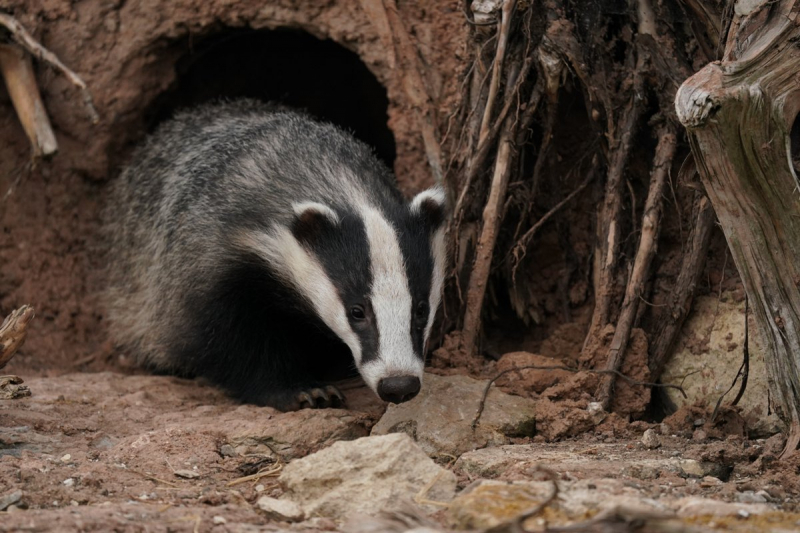They are great excavators
One of the interesting facts about Badgers is that they are great excavators. Badgers can effectively dig through dirt and more resilient surfaces because of their powerful forelimbs. They build extensive tunnels known as setts or dens using their powerful digging abilities. Although badger behavior varies by family, all take refuge underground in setts, which can be quite large burrows. While some are known to live alone and move from house to house, others are known to create cetes or clans. Therefore, the density of caves they train in constitutes the most complex system, and this system is inherited from generation to generation.
The number of exits for a nest varies from a few holes to 44-50. Badgers can dig a very large nest, and can sometimes accommodate many "families". In the case of many families living together, many sections are separated and separate areas are formed. Many nests may have exits to be used only in case of danger or play. A typical nest is 22–63 cm wide and 14–32 cm high. There are 3 areas in a nest, some of which are open at both ends. Each area is located 5–10 m from the door, and more than 1 m above the ground, in some cases 2.3 m. In general, the passages in the cave are 35–81 m long.
Badgers spend much of their time in their dens napping and collecting prey. Badgers frequently change where they sleep each night and have several tunnels scattered around their home area. Although badgers have partly webbed feet that are more suited for climbing than digging, they also have long claws for digging. Badgers burrow throughout the year, especially in the fall and spring. Areas in the nest system are often lined with materials such as grass, hawk ferns, straw, leaves, or moss. They up to 30 bundles of grass can be brought into the nest in one night. They are known for being clean animals, often replacing old nesting materials. During the winter, they can take the lining materials outside to expose to the bright sun and wear them in the afternoon. Spring cleanup to welcome the young, and this can be done several times throughout the summer to prevent parasites.








